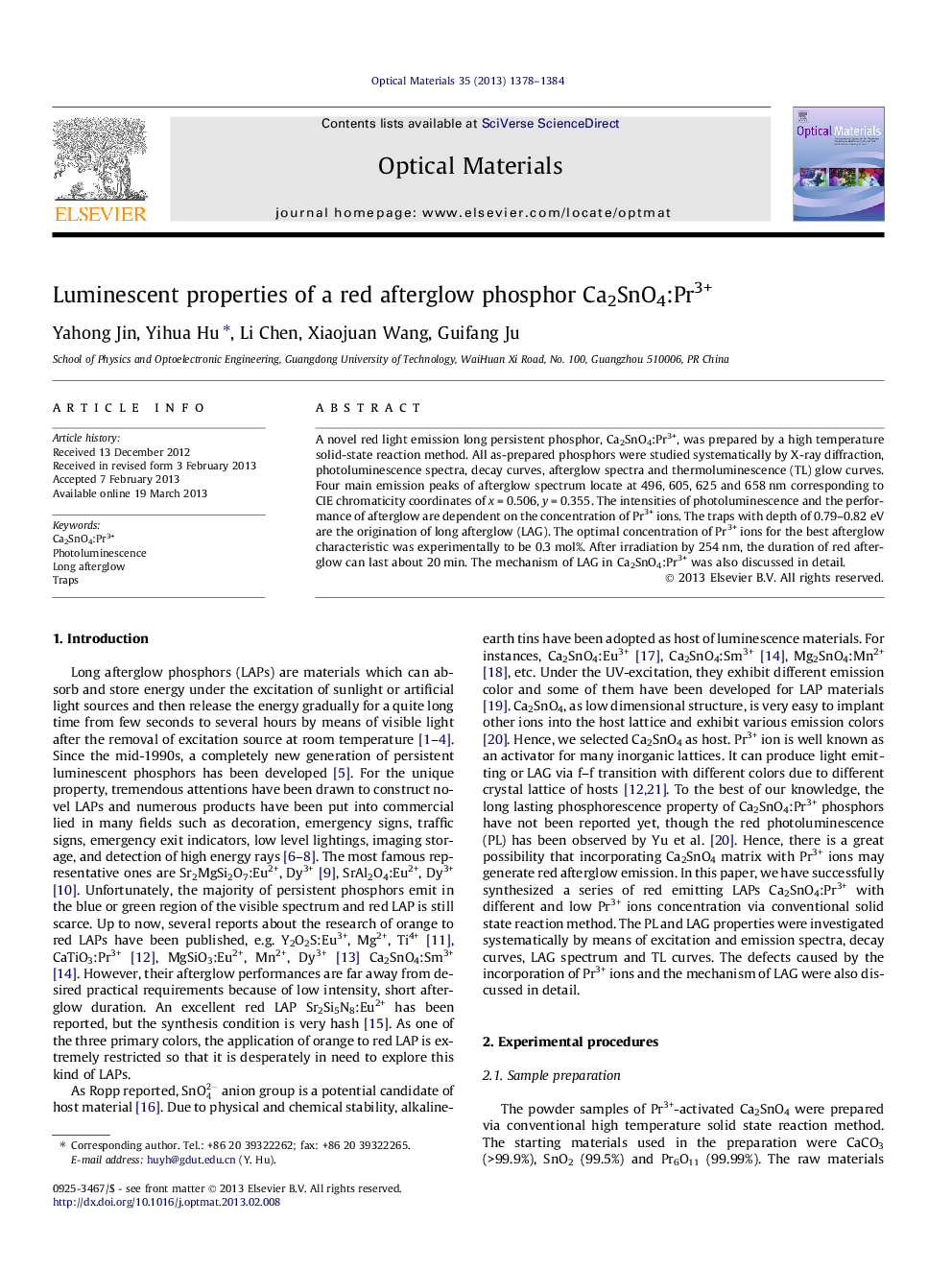| Article ID | Journal | Published Year | Pages | File Type |
|---|---|---|---|---|
| 1494605 | Optical Materials | 2013 | 7 Pages |
A novel red light emission long persistent phosphor, Ca2SnO4:Pr3+, was prepared by a high temperature solid-state reaction method. All as-prepared phosphors were studied systematically by X-ray diffraction, photoluminescence spectra, decay curves, afterglow spectra and thermoluminescence (TL) glow curves. Four main emission peaks of afterglow spectrum locate at 496, 605, 625 and 658 nm corresponding to CIE chromaticity coordinates of x = 0.506, y = 0.355. The intensities of photoluminescence and the performance of afterglow are dependent on the concentration of Pr3+ ions. The traps with depth of 0.79–0.82 eV are the origination of long afterglow (LAG). The optimal concentration of Pr3+ ions for the best afterglow characteristic was experimentally to be 0.3 mol%. After irradiation by 254 nm, the duration of red afterglow can last about 20 min. The mechanism of LAG in Ca2SnO4:Pr3+ was also discussed in detail.
► The photoluminescence properties of Ca2SnO4:Pr3+ was investigated systematically. ► The long afterglow was observed in Ca2SnO4:Pr3+ phosphor for the first time. ► The optimized concentration of Pr3+ ions of afterglow was experimentally to be 0.3 mol%. ► The mechanism of long afterglow was discussed in detail.
